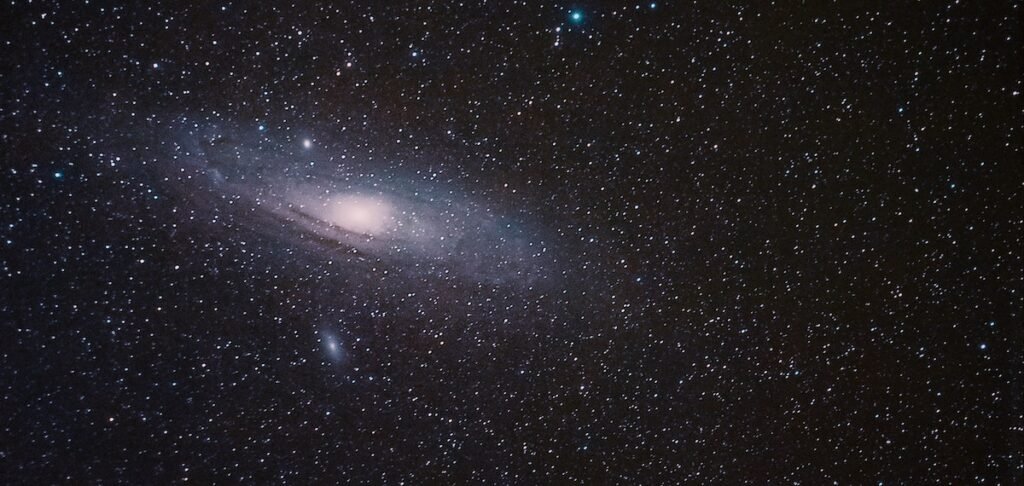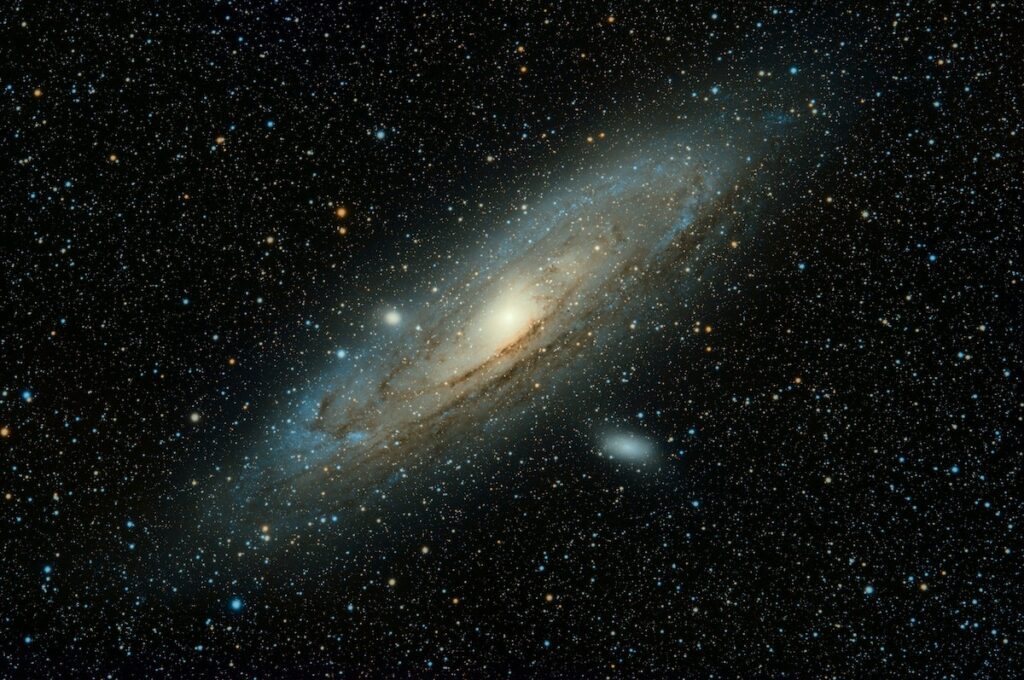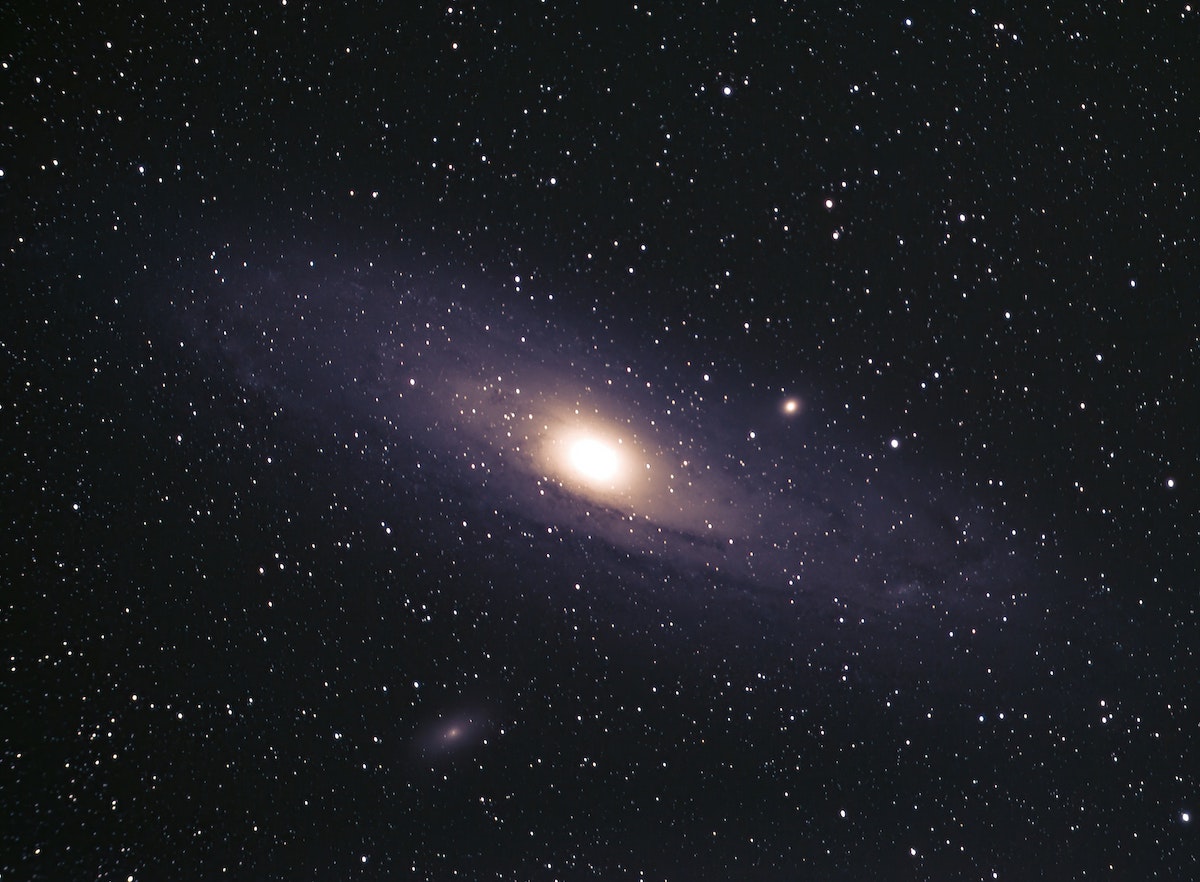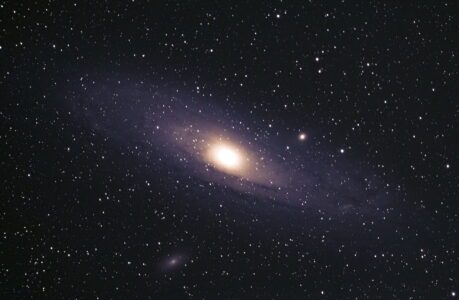The Andromeda Galaxy, also known as Messier 31 (M31), is a spiral galaxy located approximately 2.5 million light-years away from Earth in the constellation Andromeda. It is the closest galaxy to our own Milky Way and is one of the brightest objects in the night sky.
Andromeda is an enormous galaxy, containing an estimated one trillion stars and a mass equivalent to one quadrillion times that of the Sun. Its disk is approximately 220,000 light-years in diameter, making it approximately twice the size of the Milky Way.
The Andromeda Galaxy has a distinct structure, featuring a central bulge surrounded by a disk of stars and gas, with prominent spiral arms that are dotted with bright star-forming regions. The central bulge is thought to contain a supermassive black hole with a mass estimated to be several million times that of the Sun.

Astronomers believe that Andromeda and the Milky Way are on a collision course and will eventually merge to form a giant elliptical galaxy in about 4 billion years. This is a slow process and the stars in each galaxy will not collide, but the gravitational interaction between the two galaxies will cause changes in their structure over time.
One of the most notable features of the Andromeda Galaxy is its bright nucleus, which is thought to be the result of a massive starburst that occurred several hundred million years ago. This starburst is believed to have been triggered by the collision between Andromeda and another small galaxy, leading to a significant increase in the rate of star formation in the central regions of the galaxy.
In addition to its impressive size and structure, the Andromeda Galaxy is also home to several satellite galaxies, including the dwarf elliptical galaxies M32 and M110. These satellites are thought to have been captured by Andromeda in the past, and their orbits provide important clues about the formation and evolution of large galaxies.
Overall, the Andromeda Galaxy is a fascinating object that provides astronomers with valuable insights into the structure and evolution of large galaxies. With advances in technology and the increasing availability of large telescopes, astronomers will continue to study Andromeda and other galaxies to deepen our understanding of the universe and our place in it.

Where can I find the Andromeda galaxy
The Andromeda Galaxy can be found in the constellation Andromeda, which is located in the northern hemisphere sky. It is one of the brightest objects in the night sky and is visible to the naked eye as a faint, fuzzy patch of light.
The best time to observe Andromeda is during the autumn months, when it rises above the horizon in the east just before dawn. During this time, it is easily visible in dark skies away from light pollution.
To find Andromeda, look for the constellation Cassiopeia, which is a distinctive W-shaped pattern of stars in the northern sky. From Cassiopeia, follow an imaginary line through the stars in the constellation and towards the southeast. The Andromeda Galaxy will be visible as a faint, fuzzy patch of light in the direction of the constellation Pegasus.
If you have difficulty seeing Andromeda with the naked eye, a pair of binoculars can be helpful. Additionally, many public observatories and star parties offer opportunities to view the galaxy through a telescope, which will provide a much clearer view of its spiral structure and bright nucleus.

